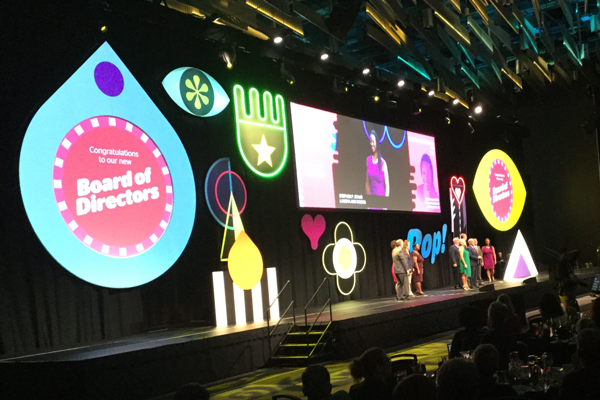ASAE closes annual meeting pondering the future
ASAE closes annual meeting pondering the future
- August 14, 2019 |
-
 Walt Williams
Walt Williams

Event ends with celebration and entertainment but also a discussion of associations' role in modern world

COLUMBUS, OHIO—ASAE ended its 2019 Annual Meeting and Exposition on Tuesday by raising a somber question: Do associations have a future?
The answer for ASAE, of course, is yes. And for newly installed ASAE board of directors Chair Patricia Blake, the question wasn't a new one.
"You may not know, but the end of associations has been predicted over and over and over," Blake told attendees during the meeting's closing luncheon. "First it was because of the telephone, and then the automobile, and then the TV and the jet plane and webinars and the internet and now artificial intelligence. Yet, we are still here. We are still thriving."
More than 5,000 people gathered at the Greater Columbus Convention Center for this year's meeting. ASAE wrapped up the four-day event with a half-day of educational sessions and talks before an awards luncheon and ending keynote speech by actor Alton Fitzgerald White. Country music star Brad Paisley headlined the evening's entertainment.
The end of the annual meeting also marked the start of the countdown to ASAE's 100th anniversary, which the group will celebrate at next year's annual meeting in Las Vegas—the first time ASAE has held the event in the city since 1969.
ASAE moves into its centennial year with new board leadership. Sal Martino, CEO of the American Society of Radiologic Technologists, transitioned into his new role of immediate past chair of the ASAE board while Blake, CEO of the Heart Rhythm Society, became chair.
ASAE would like to be around another 100 years, but the critical question facing the association community is whether associations can remain relevant at a time of rapid technological change and when young professionals seem less eager to join groups than their predecessors. Some of the best-attended sessions at this year's meeting focused on ways to grow membership.
"The wild card today really is digital technology," Blake said during her speech. "We have devices we hold in our hands that instantly access all human knowledge and communicate with almost everyone on Earth. Can associations, which traffic in knowledge and connections, survive that reality?"
Blake believes they can "because people are social creatures."
"That has been true for the past 200,000 years and I do not think that's going to change in the next 100," she said. "I see this need to build communities among the younger physician scientists and allied professionals who are part of the Heart Rhythm Society. They are not about to give up their devices, but they still crave that face-to-face meeting time. For them, it's an ‘and,' not an ‘or.' And this is the magic of associations."
ASAE plans to spend the next few years proving that worth. Among the initiatives announced at the annual meeting was new research concerning the role associations play in workforce development, with funding coming from the ASAE Foundation.
